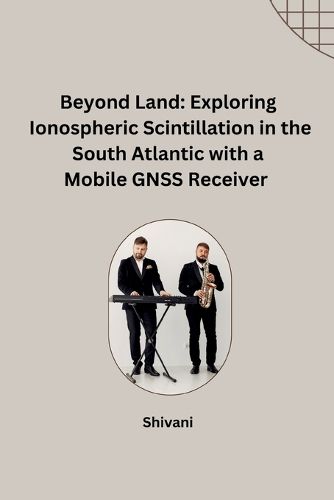Readings Newsletter
Become a Readings Member to make your shopping experience even easier.
Sign in or sign up for free!
You’re not far away from qualifying for FREE standard shipping within Australia
You’ve qualified for FREE standard shipping within Australia
The cart is loading…






Imagine navigating the vast expanse of the South Atlantic Ocean, where traditional methods like land-based stations can't reach. Here's where a groundbreaking approach emerges: using a mobile GNSS (Global Navigation Satellite System) receiver to explore "ionospheric scintillation" in this remote region. Ionospheric scintillation is a rapid fluctuation in radio signals caused by variations in electron density within the upper atmosphere. The South Atlantic Anomaly (SAA), a region with a weakened magnetic field, intensifies this phenomenon. For navigation systems like GPS, scintillation can lead to errors or even signal loss. Traditionally, studying scintillation relied on land-based receivers, leaving vast ocean areas unexplored. This mobile GNSS receiver mounted on a research vessel ventures into the heart of the SAA, collecting real-time data on scintillation intensity and its effects on GNSS signals. This groundbreaking approach offers several advantages. It allows scientists to map the spatial extent of scintillation within the SAA, creating a more comprehensive picture of this phenomenon. By studying how scintillation intensity varies across the region, scientists can refine prediction models for safer navigation. Furthermore, a mobile receiver can capture the dynamic nature of scintillation. Unlike land-based stations with fixed locations, the mobile receiver offers a continuous stream of data, revealing how scintillation intensity changes over time. This data is crucial for understanding how scintillation events evolve and their potential impact on GNSS users. The information gleaned from such expeditions paves the way for improved navigation in the South Atlantic. By understanding scintillation patterns, mitigation strategies like using multiple frequencies or real-time signal correction techniques can be developed. Ultimately, venturing "beyond land" with a mobile GNSS receiver is a critical step towards ensuring safe and reliable navigation in this challeng
$9.00 standard shipping within Australia
FREE standard shipping within Australia for orders over $100.00
Express & International shipping calculated at checkout
Stock availability can be subject to change without notice. We recommend calling the shop or contacting our online team to check availability of low stock items. Please see our Shopping Online page for more details.
Imagine navigating the vast expanse of the South Atlantic Ocean, where traditional methods like land-based stations can't reach. Here's where a groundbreaking approach emerges: using a mobile GNSS (Global Navigation Satellite System) receiver to explore "ionospheric scintillation" in this remote region. Ionospheric scintillation is a rapid fluctuation in radio signals caused by variations in electron density within the upper atmosphere. The South Atlantic Anomaly (SAA), a region with a weakened magnetic field, intensifies this phenomenon. For navigation systems like GPS, scintillation can lead to errors or even signal loss. Traditionally, studying scintillation relied on land-based receivers, leaving vast ocean areas unexplored. This mobile GNSS receiver mounted on a research vessel ventures into the heart of the SAA, collecting real-time data on scintillation intensity and its effects on GNSS signals. This groundbreaking approach offers several advantages. It allows scientists to map the spatial extent of scintillation within the SAA, creating a more comprehensive picture of this phenomenon. By studying how scintillation intensity varies across the region, scientists can refine prediction models for safer navigation. Furthermore, a mobile receiver can capture the dynamic nature of scintillation. Unlike land-based stations with fixed locations, the mobile receiver offers a continuous stream of data, revealing how scintillation intensity changes over time. This data is crucial for understanding how scintillation events evolve and their potential impact on GNSS users. The information gleaned from such expeditions paves the way for improved navigation in the South Atlantic. By understanding scintillation patterns, mitigation strategies like using multiple frequencies or real-time signal correction techniques can be developed. Ultimately, venturing "beyond land" with a mobile GNSS receiver is a critical step towards ensuring safe and reliable navigation in this challeng